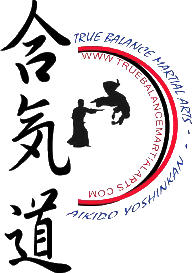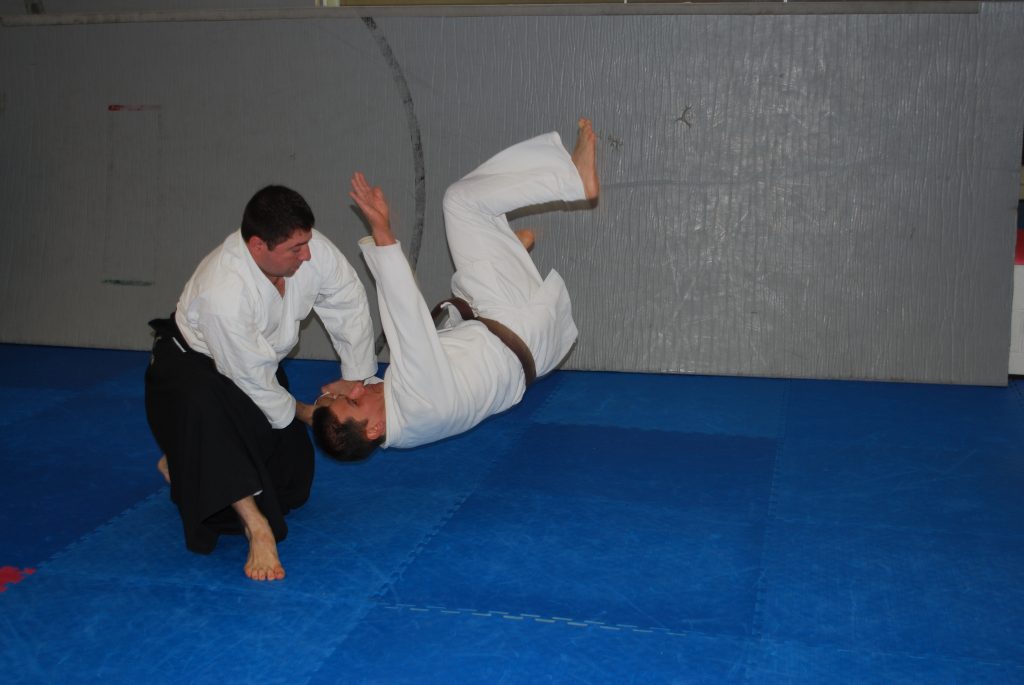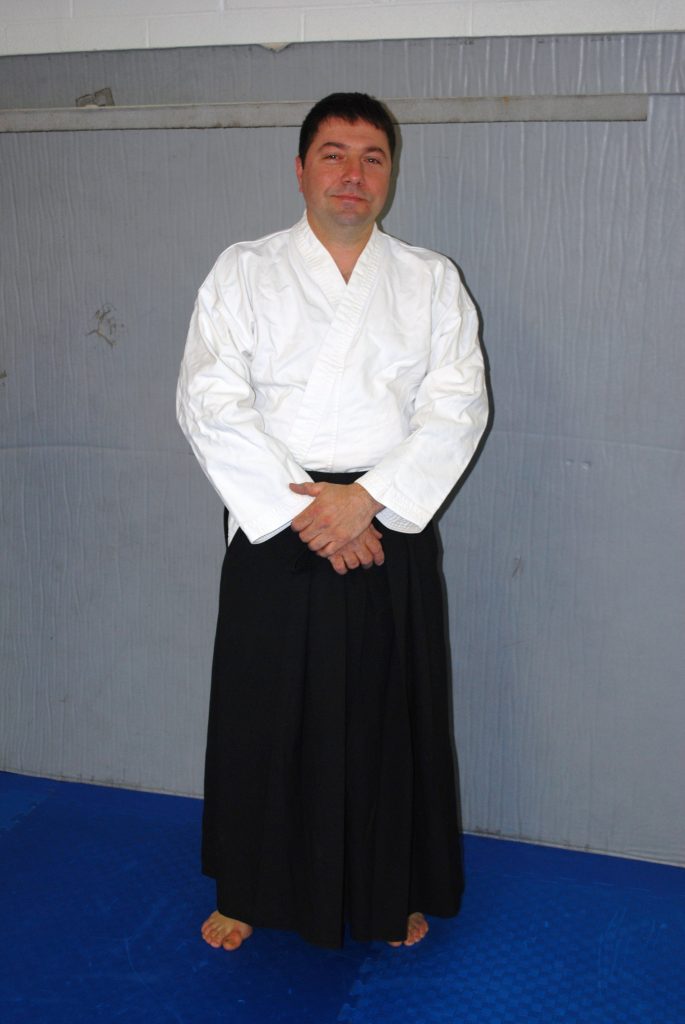

Aikido 合気道 is a Japanese martial art developed by Morihei Ueshiba as a synthesis of his martial studies and philosophy. Aikido is often translated as “the Way of Harmony.” Ueshiba’s goal was to create an art that practitioners could use to defend themselves while also protecting their attacker from injury. The philosophy of Aikido is not to be competitive, so the training is purely for personal development. Aikido is vigorous, weight-bearing exercise that improves your strength, coordination, balance and your overall health. The training also helps you develop alertness and a calm mind. Most people find that regular training reduces stress levels significantly. The most important reason to study Aikido, however, is to enjoy it!
There are many styles of Aikido. The style of Aikido that we practice at True Balance is called Yoshinkan. Gozo Shioda (Kancho Sensei) created this style. He was one of Ueshiba Sensei most outstanding students. Yoshinkan Aikido is practiced throughout the world. It is taught to the Tokyo riot police and many other Japanese forces. It is one of the oldest styles of Aikido still practiced today. Yo means cultivating, shin means spirit or mind and kan means house. Thus Yoshinkan is the house for the cultivation of spirit.
There is an old saying “A journey of a thousand miles begins with the 1st step”. Men and Women of all ages can study Aikido, regardless of physical skill or previous experience in athletics or other martial arts. Training is always self-paced, and all ranks train together, with more experienced students helping the newer students. Children can start as young as 7 years of age. Welcome to your first step of a long and rewarding journey.

The instructor of Aikido at true balance is Sensei Paul Vigiano. In 2010 he was promoted to Sandon.
Aikido training consists of projections (throws and falls) and immobilizations (where one locks out his or her opponent into a submission technique). Blending with an attack, using the attackers energy against them. A class session generally works on between 3 and 5 different techniques. Each person receives a partner to work with and rotates for each technique. The partners take turns attacking and defending. Weapons’ training is also an important part of Aikido. Aikido is a sword based martial art. Our Aikido history stems from the Samurai, therefore we practice many sword forms (Kata) individually and with partners. We also practice with the Jo (wooden staff) and Tanto (the knife). Weapons training heightens the training experience and helps students realize or relate to many of the Aikido movements and techniques.